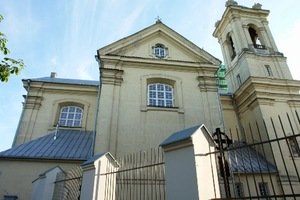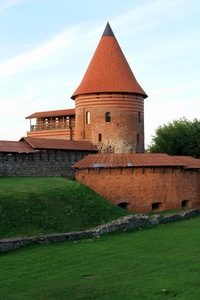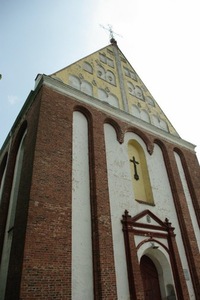JOURNEYS OF PAŽAISLIS MUSIC FESTIVAL AROUND LITHUANIAN ARCHITECTURAL HERITAGE 0
In brief: The Pažaislis Music Festival is part of Kaunas summer: it has been held for seventeen years to promote professional music in alternative venues. Every musical feast of the Pažaislis is also a journey to the finest sites of architectural heritage in Lithuania.
Based on the shore of Kaunas Sea, in the Pažaislis Architectural Ensemble, the travelling festival helps revive many other old buildings – churches, manors and castles. The audience follow musicians and soloists to the most remote places of province with pleasure.
One of the first of such sites was Zapyškis Church. A Gothic building stood derelict until crowds of classical music lovers began to flow into it.
The appearance of Kaunas Castle in the festival‘s programme was rather similar to the one of Zapyškis Church. Fifteen performances have been already shown at the castle. Yet when the organisers were preparing for the first one, no concerts or events had been held in the surroundings of Kaunas Castle before. The only visitors of the castle were homeless people at that time. ‘Mindaugas’ by Justinas Marcinkevičius was the first performance to bring the castle back to life.
The organisers still remember when in 1997 they tried to find the floor in St George the Martyr’s Church located just in the neighbourhood of Kaunas Castle. There was so much sand in the church that both organisers and restorers had to ask soldiers to dig out the floor. Once a large and heavy bird nest fell down from a cross during a concert but luckily no one was hurt. Today St George’s Church is being revived and restored, and the Holy Mass is held here.
This summer the festival entered new objects of architectural heritage. A concert will be held in Žeimiai Manor near Jonava. Various concerts and festivals have been organised here for a decade now.
Guests of the festival could visit the Holy Virgin Mary’s Birth Church recently built in the Lithuanian Folk Life Museum according to the plan of the old Sasnava Church. The 19th-century church was demolished in the mid-20th century and the new church was built following the remaining historical, archival and iconographic data.
The festival also visited the wooden Holy Virgin Mary Scapular’s Church in Margininkai. The little church is characteristic of a small tower on its roof and a belfry of peculiar forms.
Music of copper wind instruments resounded in the remote Skaruliai St Anne’s Church in Jonava. The shrine evaded the fate of desolated churches during the Soviet period since the whole settlement of Skaruliai was evicted and the church was locked up.
For the first time in the festival’s history a concert was given at the 17th-century Raudondvaris Manor, once owned by the Zabielos, the Tiškevičiai and other prominent noble families. The manor is being restored and there are plans to found a museum and an arts incubator here.
The organisers had invited many world-famous music stars to perform in objects of architectural heritage of Lithuania. For instance, the prestigious Grammy award-winner Philadelphia Boy Choir gave a concert at the newly re-built church in the Lithuanian Folk Life Museum this year. Moreover, last year they performed at Žeimiai Church.
Restored manors are alternative concert venues as well. The organisers already think about the next year: according to them, Oginskis Manor Stables in Rietavas are being converted to a concert hall at the moment. In the meanwhile, the concert hall of the luxurious Žemaitkiemis Manor is located in the former manor shed.
Manors in Gelgaudiškis and Šešuolėliai are also candidates to the festival’s programme next year.
However, so many venues set for concerts started to appear rather recently. The chair of Lithuanian Castles and Manors Association A. Svitojus asserts that the activities to resurrect the Lithuanian architectural heritage started only a bit more than six years ago. Ancient buildings were rebuilt in the Soviet period ruthlessly and they were devastated even after - until the noughties. Eventually the attitude changed and the heritage began to be protected and restored. People started to re-evaluate the significance of a manor as a spawn of culture, economics and traditions.
According to the data of Cultural Heritage Department, there are 533 manor houses in Lithuania today. 32 manors are protected by the state and 26 of them are culture monuments with the highest status of protection. 38 percent of manors – around two hundred on the whole – belong to private owners.












